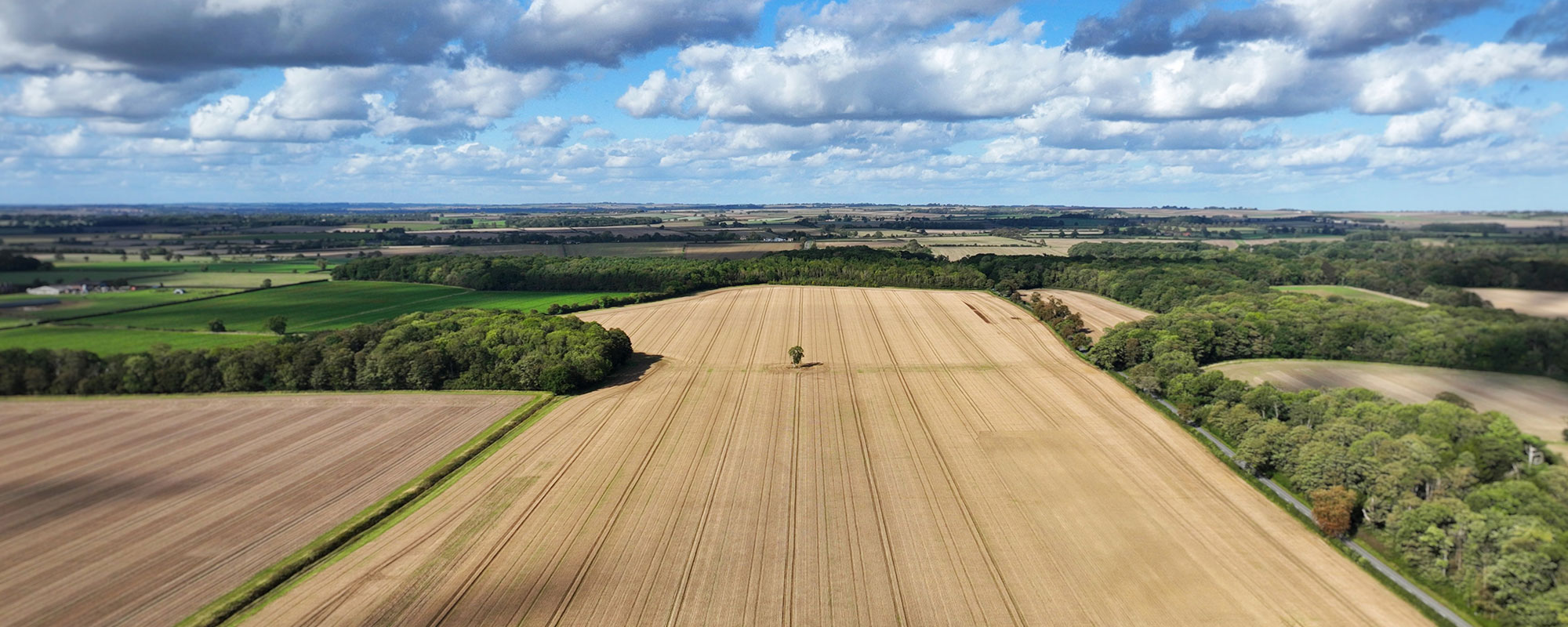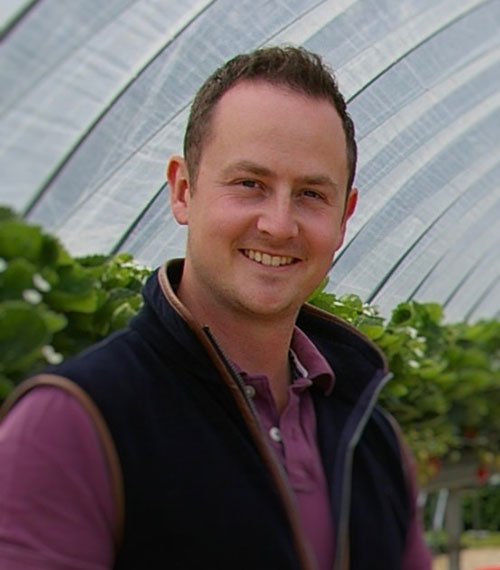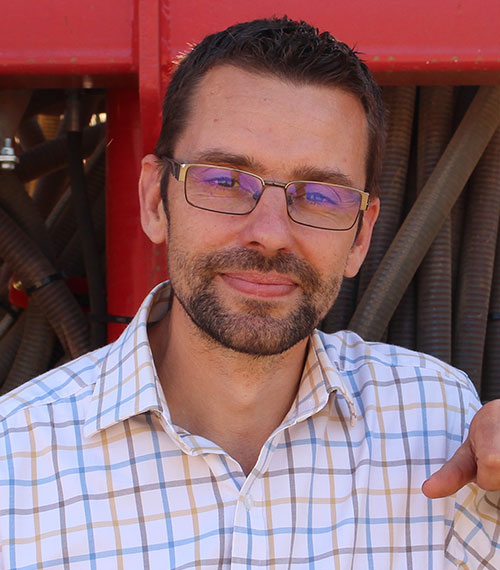
Agrii trials designed to identify how new technologies can be combined to best effect are giving one Lincolnshire farming business a vital insight into how to make better use of crop inputs and maximise nitrogen use efficiency (NUE).
Year one of the trial suggests margin improvements of £24,000 can be made across its winter wheat area, with changes planned for year two at Revesby Estate, near Boston, promising even greater gains.

“These are early days for the work,“ explains Agrii technology trials manager Jonathan Trotter. “But we are already identifying where improvements can be made across the farm with particular relevance to nitrogen and fertiliser use.
“As a result, the business has decided to move its fertiliser strategy towards a variable rate system and we’re seeing many other areas where improvements can be made.
“That’s against the backdrop of an exceptionally well-managed farm already run to a very high level of efficiency, and we’re hoping many of our findings can be taken on by other growers regardless of the system they use.“
Evaluating new technology
A key objective of Agrii’s Digital Technology Farm (DTF) initiative is to bring together a range of new technologies and data collection systems to see how they can enhance decision making compared to a traditional agronomic approach, he says.
“We’ve got four DTF farm trial initiatives now set up across the country using a range of technologies with a wide variety of potential applications.
“At Revesby, for example, the Skippy Scout drone system we are using can monitor above ground crop growth and information from this could be enhanced by data on below-ground nitrogen levels from Plentysense nitrogen blades in the soil.
“These sense N-availability at three different levels – 10, 20 and 40cm – and there is a telemetry head that sits on top of them that tells us in real time what N the soil has.
“We can then understand how the N is moving through the soil profile to help improve decision making around nitrogen management.
“This data can then be combined with that from Soiltech Wireless soil moisture and temperature sensors, and all the information we are collecting can then eventually link into Agrii’s Rhiza online Contour platform.
“We are also starting to use hyperlocal disease prediction models based on key risk factors and data.“
Nitrogen use benefits

At Revesby, a 40ha site with 10 different soil zones was used for the trial with half the field managed by estate farm manager Peter Cartwright and the other by Jonathan and Agrii digital agronomy development manager Lucy Cottingham using the technology.
In terms of NUE, both halves achieved an average of 48%, with parts of the DTF side reaching 58%, Lucy explains.
“Overall, the same average level of NUE was achieved on the DTF side using variable rates based on information from the technology, as that seen from the farm’s flat rate approach.
“But there was a saving of between 6% to 24% on nitrogen spend, depending on the zones, making the DTF nitrogen approach more effective to the tune of £33.91/ha as well as being more sustainable in the long-term.
“Yield is a key metric for the NUE calculation so to achieve the same NUE with a lower yield shows how much more effective the DTF strategy for N has been.
“When multiplied across the 400ha of wheat on the farm, this results in a saving of £13,564, which increases to a benefit of over £24,000 when the SFI payment for using variable rate nutrition of £10,500 is added in. So that’s a sizeable advantage.“
Reduced input costs
Benefits of the technology with regard to fungicide use and disease control are less clear cut when looking at the first year results, she points out.
“The DTF side did achieve an overall £8.65/ha reduction in input costs compared to standard farm practice, but yields were down by 1t/ha, which obviously hit margins.
“It’s very much a learning exercise, though, and we know where changes in fungicide choice for the DTF side could have improved things considerably. Disease control was effective, but we missed out on some greening and other physiological benefits.
“Farm standard practice, for example, included Syngenta’s new fungicide pydilflumetofen (Miravis Plus), where this was not included in the DTF programme.
“Agrii trials have shown a clear 1t/ha yield advantage from this active, so that would go a long way to explaining the lower yields.
“It’s something we will be considering for the second year of trials, along with some changes to the technology used, including verification of disease presence in leaves using Bayer’s CropCheck system alongside Agrii’s disease risk ratings on Contour.
“We’re also planning to use live spore trapping and AI disease identification technology.
“The DTF initiative is something we have a long-term commitment to, so we’ll also be moving the trials in to some other crops including oilseed rape and sugar beet at Revesby.“
Important project

Revesby Estate Farm Manager Peter Cartwright says NUE is a key focus for the business with the DTF initiative helping them better understand how to improve it and where new technologies can contribute.
“Nitrogen use is definitely a main element of our carbon footprint and we’re keen to find the best way of managing it more effectively.
“You can’t ignore the cost benefits of variable rate N that the DTF work has shown, so we’re now going to be using Skippy Scout drone AI software, Contour and variable rate nutrition across the estate.
“We’ve also signed up for the SFI variable rate application of nutrients (PRF1) and this combined with no till farming (SOH1) adds up to £100/ha.
“We’ll also be working with Agrii to see if we can get disease risk forecasting working more efficiently for us and see if we can respond better to the alerts when they arise.
“Our own trials have shown the benefits of using Agri-Start Liqui-Safe, a urease and nitrification inhibitor which holds nitrogen in the soil, with some trials pointing to a 50% reduction in yield without the technology, so we’ll be trying that approach again.
“We’ve also seen good results from using biologicals in the early stages of crop growth to promote plant health and build green area, so we want to look into this more, too.
“We’ve learned a lot from being part of the DTF network already and are sure this will continue in the future. It’s very exciting to be part of such an important and forward-thinking project.“
The work conducted as part of the Digital Technology Farm Trials and subsequent article written above was done whilst SFI was still open for applications.
Learn more about our DTF’s here


